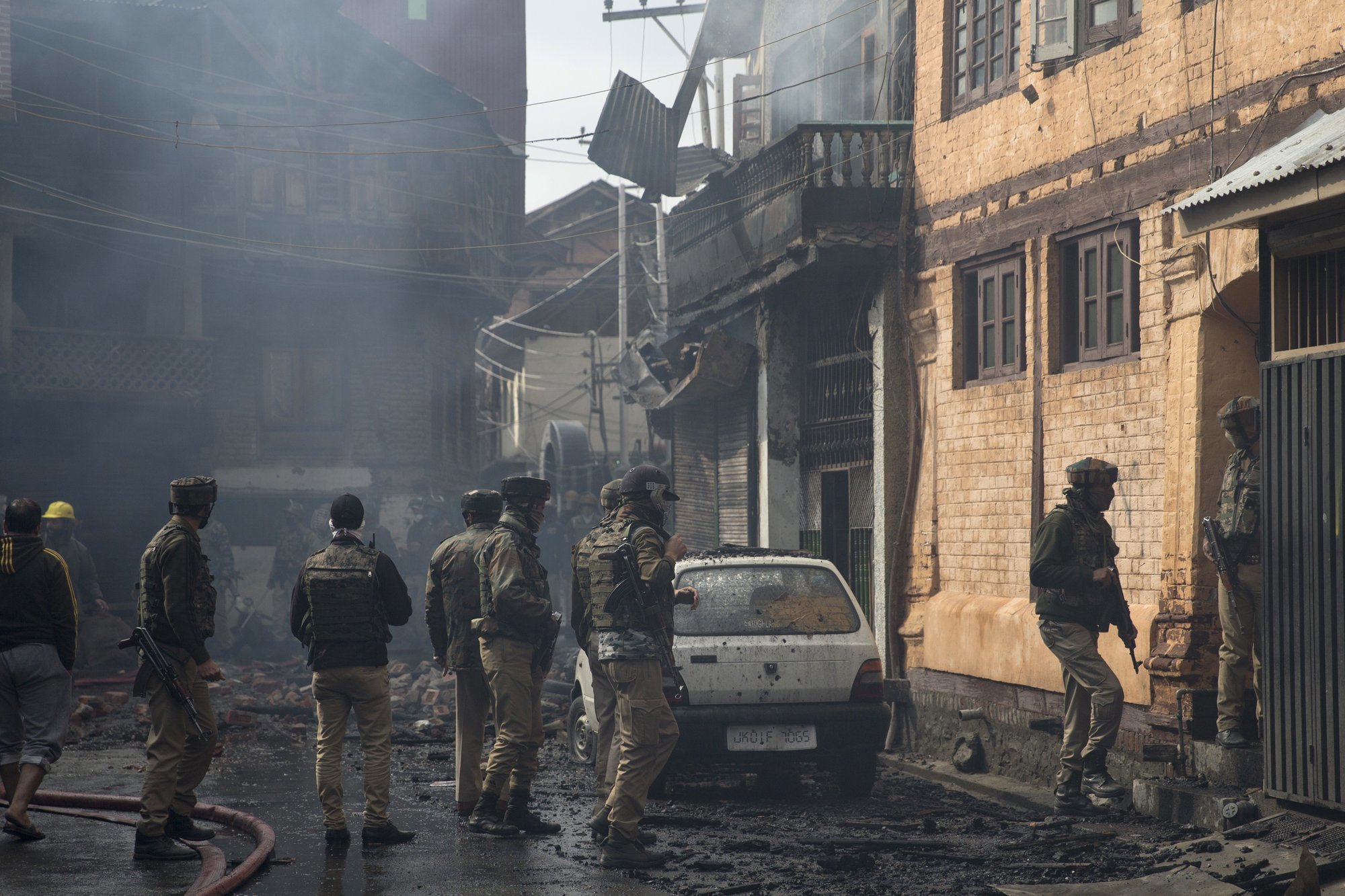Anti-India protests and clashes erupted in the main city in India-held Kashmir (IHK) on Wednesday after a gunbattle between armed men and government forces killed at least two suspected Kashmiri fighters, a civilian and a counterinsurgency police official, residents and police said.
At least a dozen journalists covering the fighting were beaten by counterinsurgency policemen well after the fighting ended, media groups and reporters said.
The gunbattle began early on Wednesday after troops cordoned off a neighborhood in Srinagar on a tip that some armed fighters were in a civilian home, police said. The exchange of gunfire lasted for about half an hour, police said, leaving two armed fighters, a son of the house owner and a police official dead.

Asif Nabi, another son of the house owner, said the shooting began shortly after Indian troops knocked on their door and took away his brother. Police said the man was killed in the fighting as he tried to escape along with the armed fighter, alleging he had provided logistic support to them.
The house owner suffered cardiac arrest during the raid and was hospitalised, residents and police said.
At least three soldiers were also injured in the fighting. No further information was immediately available.
Residents said they heard loud explosions during the fighting and accused the troops of blasting at least two houses with explosives.
As news of the fighting spread, anti-India protests and clashes erupted in several places in downtown Srinagar. Demonstrators chanting slogans demanding an end to Indian rule tried to reach the site of the standoff and threw stones at police and paramilitary soldiers.
Indian forces fired tear gas and shotgun pellets to stop the protesters. There were no reports of injuries.
Most shops and businesses closed to protest the killings and authorities deployed more paramilitary soldiers and police in riot gear to patrol streets in the already densely militarised region.
Authorities limited communications, including internet on cellphones, as is routine during such fighting to make organising anti-India protests difficult. They also ordered schools shut in anticipation of student protests.
Media personnel injured
Some journalists were injured when police hit them with batons and gun butts, said Asif Qureshi, a senior TV journalist. “The irony is that they beat us in the presence of a senior police officer,” Qureshi said. “They pointed guns at us and threatened to fire at us. Later they resorted to aerial firing so close that some of the empty cartridges hit me.”
S.P. Pani, a senior police officer, said authorities would investigate the incident.
The Kashmir Press Club and several journalist groups condemned the incident.
“This is not the first time when media persons have been at receiving end of security agencies. Every time media persons are assaulted, the authorities at the helm churn out theories and assure action,” the Kashmir Journalists Corps said in a statement. “But the promises of probe and action have always remained a mirage.”
Clashes between Indian troops and residents occurred on Tuesday during the last phase of local council elections that had a low turnout in Muslim-dominated areas of the region.
India and Pakistan each administer part of Kashmir, but both claim it in its entirety.
Most Kashmiris support the demand that the territory be united either under Pakistani rule or as an independent country, while also participating in civilian street protests against Indian control.
Nearly 70,000 people have been killed in the uprising and the ensuing Indian military crackdown.















































